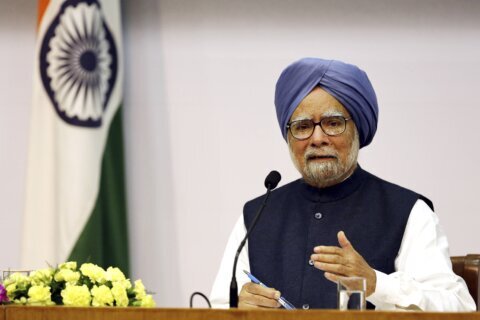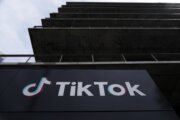Look overseas for opportunities in stocks.
There’s a whole universe of investment opportunities outside of the U.S. International stocks in developed and emerging markets provide investors with diversification across global regions in various sectors and asset classes. International stocks have not fared well thus far in 2022, with the MSCI USA index outperforming both the MSCI EAFE and ACWI indexes year to date. But this may just mean it’s a good buying opportunity for U.S. investors who are considering expanding their exposure to international markets. Here are seven of the best international stock funds to buy in 2022.
Fidelity Zero International Index Fund (ticker: FZILX)
For investors interested in exposure to international funds in developed markets at a very low expense, FZILX has you covered. With a 0% expense ratio and no minimum investment, this one is a no-brainer for anyone starting an international stock portfolio. The fund tracks the Fidelity Global ex U.S. Index, which is a market-cap-weighted index that tracks non-U.S. large- and mid-cap stocks. Sticking to large and midsize companies helps the fund minimize some of the risk associated with foreign investing. Having more than 2,400 different stocks in the portfolio also helps diversify away the risk of any one company hurting total portfolio returns. The largest holding, Nestlé SA (NSRGY), accounts for only 1.4% of the portfolio weight. It has holdings in more than nine countries. While the returns this year through Aug. 18 have been abysmal, at -14.9%, over the longer term this fund can still shine. Three-year returns are a modest 3.5% to date, but remember that this fund is still newer on the scene, having only debuted in 2018.
Expense ratio: 0%
Market value: $10.25 per share, as of August 18 close.
Vanguard Global Equity Fund (VHGEX)
This Vanguard fund gives investors access to various regional opportunities and holds about 38% of its assets in non-U.S. stocks. VHGEX has beaten its benchmark by 9% over the past 10 years. Given the fund’s allocation to U.S. equities, Vijay Khetarpal, president and CEO of Integrity Financial Group in Vienna, Virginia, says VHGEX is particularly good when an investor wants or needs just one fund for global exposure. VHGEX is down about 16% this year through Aug. 18, but it has an attractive 10.2% 10-year average annual return. Note that it requires a minimum investment of $3,000. International funds may be subject to high volatility, a common characteristic of foreign equities, so investors must have the appropriate risk tolerance and investing strategy to hold this global equity fund.
Expense ratio: 0.45%
Market value: $32.38 per share, as of August 18 close.
WisdomTree Trust China ex-State-Owned Enterprises ETF (CXSE)
“While the U.S., Europe and many emerging market countries are tightening financial conditions to battle rising prices, China’s headline inflation is expected to stay within a relatively narrow range,” says Liqian Ren, quantitative investment specialist at WisdomTree. “We believe investors are also likely overpricing the risk of near-term military confrontation over Taiwan, which is often driven to something of a frenzy on social media.” He expects that the market’s uncertainty with regard to the state of President Xi Jinping’s tenure will be resolved, at least partially, by the October Party Congress. But investors have also been wary of investing in state-owned enterprises in the nation. This is where CXSE comes in: By excluding state-owned enterprises, you can get exposure to China’s common stocks with less risk of government ownership interfering in your portfolio returns. It has nearly 250 holdings, mostly in the large-cap space. The 0.32% expense ratio is a bit higher than the typical index fund, but to be expected when investing in such a specialized area.
Expense ratio: 0.32%
Market value: $37.68 per share, as of August 18 close.
iShares MSCI Emerging Markets ETF (EEM)
Emerging-markets investments may be appealing for their high growth potential. This iShares fund offers international stock exposure exclusively to emerging-markets equities, and boasts a lifetime return of about 8.9%. China has a prevailing geographic presence in the fund, with about a 31% allocation, although this is down from 40% in early 2021. EEM also makes for an attractive fund for value investors. It’s currently hovering only a couple of dollars above its 52-week low, with the added bonus of a 2.75% 12-month dividend yield.
Expense ratio: 0.68%
Market value: $40.45 per share, as of August 18 close.
SPDR Portfolio Europe ETF (SPEU)
SPEU offers region-specific exposure to European equities. Investments from Western European countries include the U.K., France, Switzerland, Germany, Sweden and the Netherlands, among many others. This exchange-traded fund offers great diversification across various sectors and different European countries and is ranked in first place in the Europe Stock category by U.S. News & World Report. SPEU is beaten down this year, with a -17.7% return through Aug. 18, but it edges the Europe Stock category’s average performance year to date, according to Morningstar. SPEU also has a competitive dividend yield of 3.64% and an expense ratio that’s well below the category average.
Expense ratio: 0.09%
Market value: $34.32 per share, as of August 18 close.
Fidelity International Real Estate Fund (FIREX)
Real estate as an asset class offers uncorrelated diversification for stock and bond investors, as real estate investments tend to march to their own drum. Real estate can also provide a much-needed inflation hedge as prices of tangible goods begin to rise. With this Fidelity fund, investors can add another layer of diversification by gaining exposure to global real estate investments. Its top two holdings are Mitsubishi Estate Co. Ltd. (MITEY), one of the largest real estate developers in Japan, and CK Asset Holdings Ltd. (CHKGF), a Hong Kong-based property developer. Investors should note that regions like Hong Kong may represent geopolitical risk, which could impact investment returns. FIREX has a positive performance history, with a 10-year average return of about 7.8%. Over the life of the fund, which started in 2004, it has returned 5.8%, but the real benefit to this fund is its promise of steady income through its 4.38% trailing-12-month yield. It’s also a five-star fund on Morningstar’s rating scale.
Expense ratio: 0.97%
Market value: $11.88 per share, as of August 18 close.
WisdomTree Japan Hedged Equity ETF (DXJ)
Many international funds offer exposure to multiple regions at varying proportions, but for investors who want more control over their international exposures, specialized funds like DXJ are the way to go. DXJ provides exposure to a range of Japanese dividend-paying companies while using currency hedging to mitigate exposures to fluctuations in the value of the Japanese yen relative to the U.S. dollar. “While a number of central banks are raising rates aggressively to tighten financial conditions and push back against inflation, the Bank of Japan’s stance is still quite accommodative,” Ren says. “Japanese equities have some of the lowest valuations in the world, with fundamentals that are supported by the weak yen, which has benefited the country’s labor market and export competitiveness.”
Expense ratio: 0.48%
Market value: $66.33 per share, as of August 18 close.
7 best international stock funds to buy:
— Fidelity Zero International Index Fund (FZILX)
— Vanguard Global Equity Fund (VHGEX)
— WisdomTree Trust China ex-State-Owned Enterprises ETF (CXSE)
— iShares MSCI Emerging Markets ETF (EEM)
— SPDR Portfolio Europe ETF (SPEU)
— Fidelity International Real Estate Fund (FIREX)
— WisdomTree Japan Hedged Equity ETF (DXJ)
More from U.S. News
10 Stocks Warren Buffett Just Bought and Sold
Tesla Competitors: 7 Rival EV Stocks to Buy
8 Top Nancy Pelosi Stocks to Buy Now
7 Best International Stock Funds to Buy in 2022 originally appeared on usnews.com
Update 08/19/22: This story was published at an earlier date and has been updated with new information.







